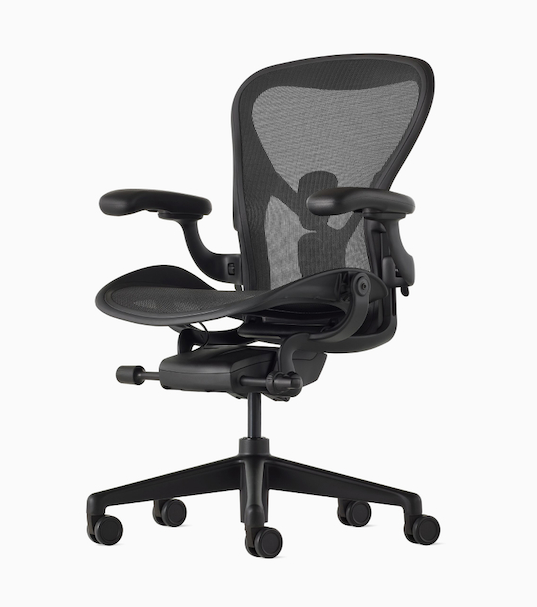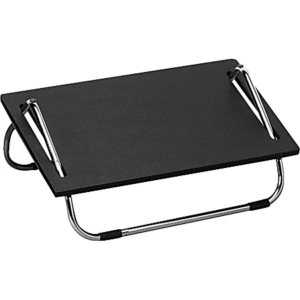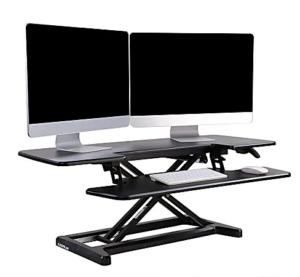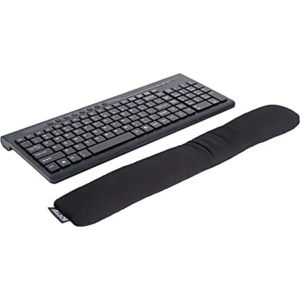One more of my most treasured items—my office chair!
Usually next to nothing hurts anymore while I’m working, and it’s because of my specialized ergonomic tools I use.
The only office chair I have used as my office chair since 2003 is the Aeron chair. I’ve replaced the bar cylinder once, the chair front Styrofoam pad insert and the chair roller feet. That’s all.
I’ve set it at a height that my forearms are slightly downward on my desk top (no scrunchy shoulders!) and I use a higher, 5” footstool under the desk because I set the chair higher to accommodate my arms.
The chair has detail settings, like one arm rest that can be higher than the other, a back support piece that can go to fit my scoliosis. The chairs even come in a small, medium and large! Though I’m really short, I still got the medium sized one and use a footstool under it.
I’ve found most desks and make shift desks just are not low enough to have my arms properly slightly downward laying if I’m sitting in the chair with my feet on the floor. The desks are taller, my arms would reach up—and now there is back and neck pain.
But not with this setup. The cost was beyond 100% worth it. I can literally work for hours without pain even because of the particular balance this chair has that knock-offs don’t have.
So this chair, I set the details and it holds them. I don’t let anyone else sit in my chair or change the settings and it holds the settings for years.
HACK: ALWAYS wear support shoes like good quality New Balance when working at your desk. I used to try working in socks at home and my legs and hips would just hurt, all being equal. Until I started wearing my shoes. Now my body lines up more correctly just because of the shoes. And if I stand to do some of the work, the shoes still support my feet and legs and hips.
In addition, if you have the space for it, I highly recommend a sit/stand desk insert. These are on hinges with pneumatic lifts and it helps not only pain management overall, but just good body circulation to alternate working by both standing up and sitting down at regular intervals if doing computer work.
Have large enough monitors that you don’t have to lean forward or crane your neck to see when you are sitting. The 24” ones are perfect.
HACK: Sometimes you can upturn a plastic shoe box size container (a little taller than a regular computer stand) and set the monitor stably on it. This will bring the monitor up to your eye level while you are seated so your neck is not twisted downward. Otherwise try a 6” computer stand if you can find out.
And be sure to protect your hands and wrists with these ideas too.





